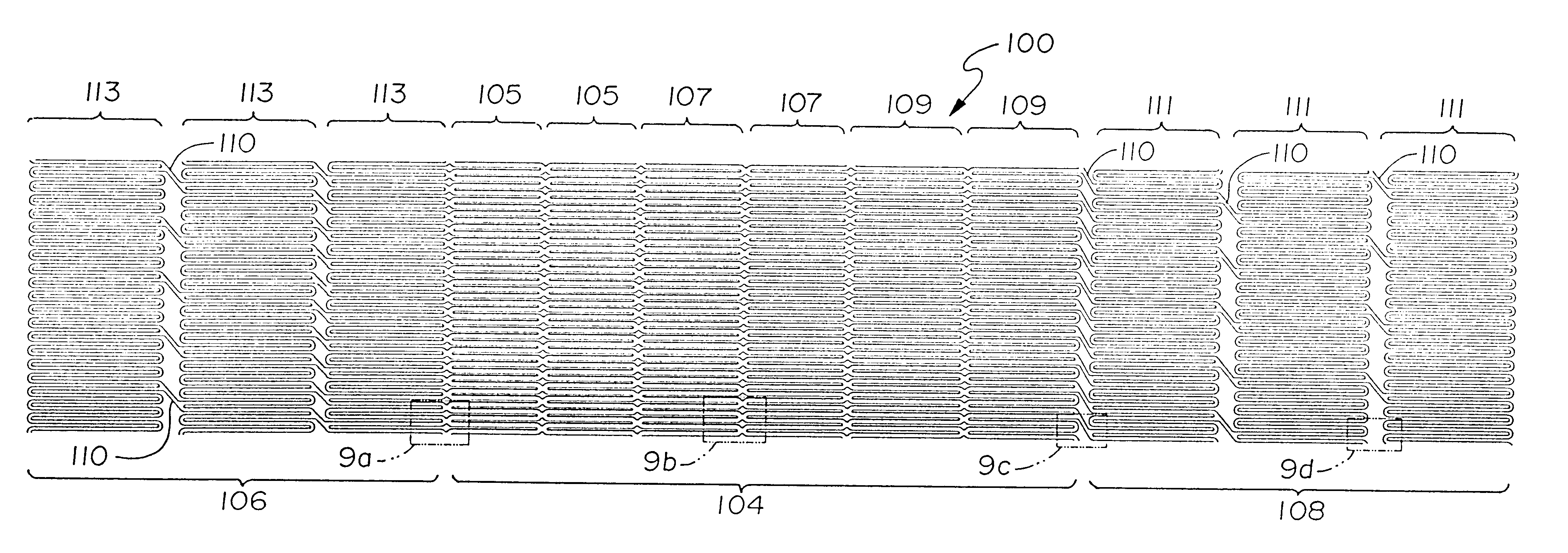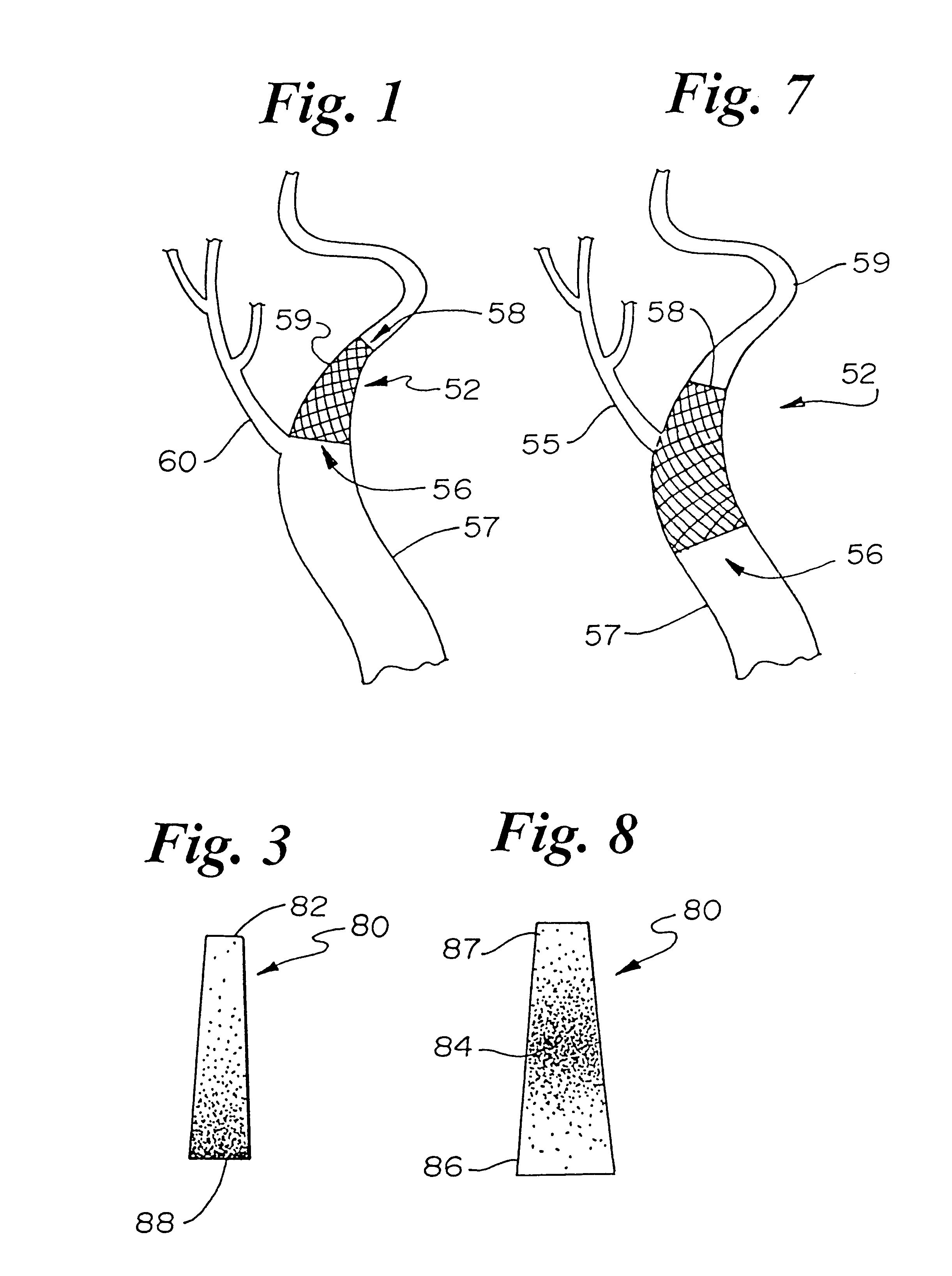Stent having variable properties and method of its use
a stent and variable technology, applied in the field of stents for holding vessels, can solve the problems of stent end flareout affecting the stenting process, and stent end may flare outward, and the stenting process is not ideal for the larger region, so as to achieve greater force and prevent kinking of the vessel
- Summary
- Abstract
- Description
- Claims
- Application Information
AI Technical Summary
Benefits of technology
Problems solved by technology
Method used
Image
Examples
Embodiment Construction
FIG. 1 illustrates a narrowing vessel 52, such as the internal carotid artery, having a wide region 56, a narrowed region 58, and a stenosis (not shown) somewhere in between, i.e., in the cross-hatched region. The narrowing vessel of FIG. 1 illustrates the geometry as found in an ostium at the bifurcation of the left common carotid 57, where blood flows from the left common carotid artery 57 into the left internal carotid artery 59. The bifurcation also opens into the left external carotid artery 60. An ordinary stent with sufficient force to hold open the wide region 56 would have greater force than necessary to hold open the narrowed region 58.
FIG. 2a illustrates a plot 66a of outward radial force F along a tapered, expanded stent length L for a stent embodying the present invention. The stent has a greater force in end region 68a than at the opposite end region 70a. A tapered stent having the force curve of FIG. 2a is suitable for bridging a stenosis as illustrated in FIG. 1, hav...
PUM
 Login to View More
Login to View More Abstract
Description
Claims
Application Information
 Login to View More
Login to View More - R&D
- Intellectual Property
- Life Sciences
- Materials
- Tech Scout
- Unparalleled Data Quality
- Higher Quality Content
- 60% Fewer Hallucinations
Browse by: Latest US Patents, China's latest patents, Technical Efficacy Thesaurus, Application Domain, Technology Topic, Popular Technical Reports.
© 2025 PatSnap. All rights reserved.Legal|Privacy policy|Modern Slavery Act Transparency Statement|Sitemap|About US| Contact US: help@patsnap.com



